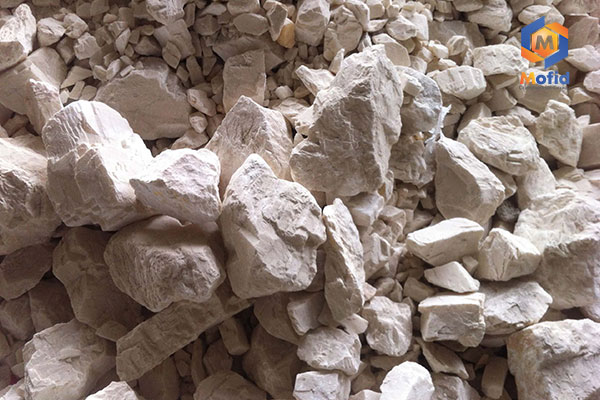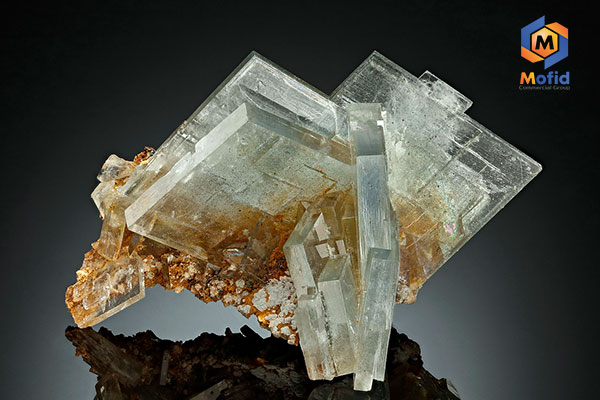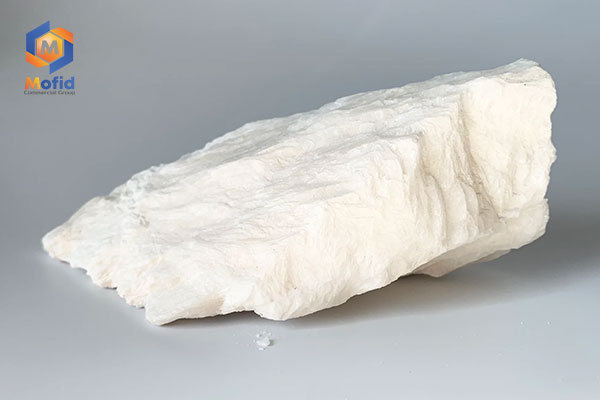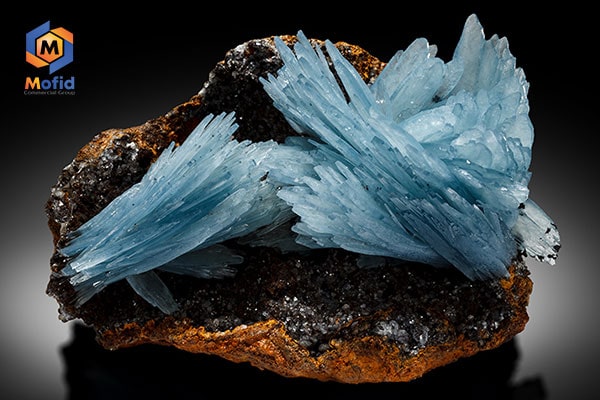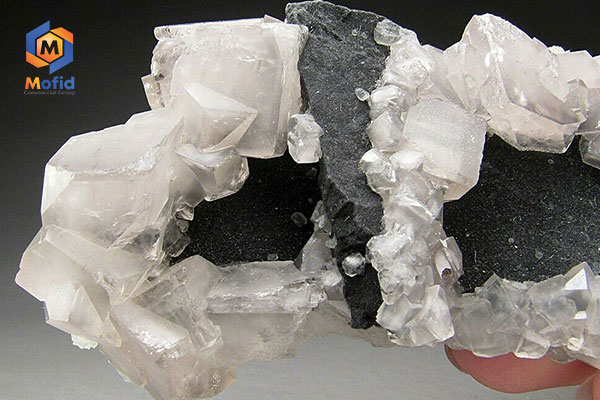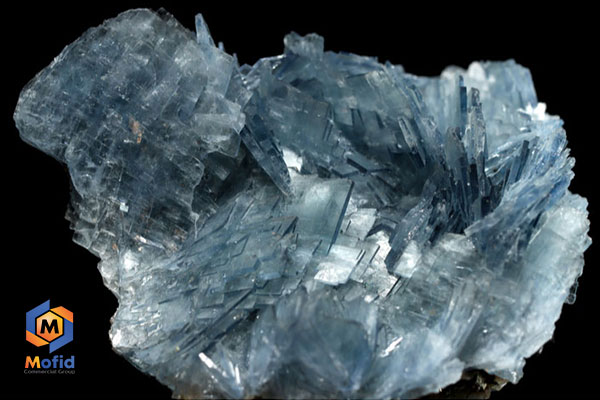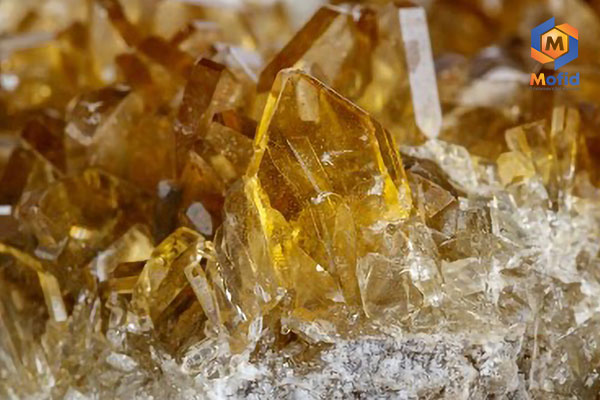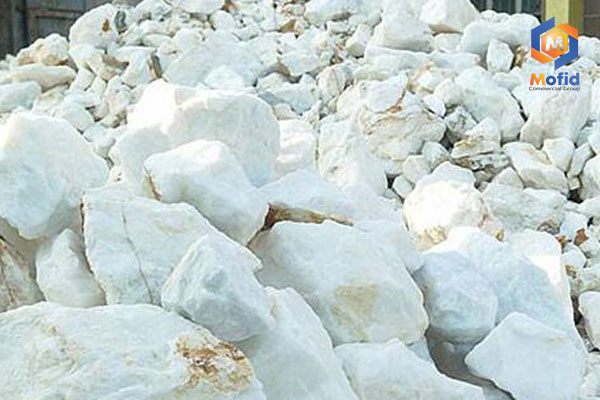What is Barite?
Barite, scientifically known as barium sulfate, is a mineral that naturally occurs in soil and sedimentary rocks. This odorless and tasteless substance is used in industry as a filler and reinforcement in the production of construction materials, paints, and chemicals. Due to its high density and flame-retardant properties, barite is also applied in the drilling and extraction industries for oil and gas. In medicine, it is utilized for preparing contrast agents in radiological imaging, providing clearer images of the digestive system.
According to Wikipedia:
Baryte or Barite (in English: Baryte) (BaSO₄) is a mineral containing barium sulfate. Compounds including barite, celestine, anglesite, and anhydrite are collectively called the barite group. Barite is the primary source of barium. Barite and celestine form a solid solution (Ba, Sr SO₄). This mineral belongs to the group of minerals and is derived from the Greek word barus, meaning “heavy.” It contains: BaO: 65.7%, SO₃: 34.3%, and Sr, Pb. It was first discovered in Romania. Regarding its crystal form: it is lamellar, broad, short, and rarely prismatic. Its color ranges from colorless, white, gray, yellow, blue, red, to brown. Its transparency varies from transparent to semi-transparent, with a luster that is vitreous to pearly. It has excellent cleavage aligned with good surfaces and belongs to the sulfate classification. Its formation origin is hydrothermal, sedimentary, or secondary.
Mineral Associations (Paragenesis):
Barite is commonly associated with calcite, aragonite, celestine, fluorite, and quartz. In terms of occurrence, barite is found in crystal form, massive aggregates, earthy formations, and lustrous forms. It is abundantly found in Western and Eastern Germany, Czechoslovakia, Great Britain, France, Romania, the USA, Mexico, Canada, Iran, and Tunisia.
Physical Properties of Barite:
Identifying this mineral is usually easy because it is one of the few non-metallic minerals with a specific gravity of four or higher. In classrooms, students often struggle to identify massive barite samples with fine-grained crystals. They observe its sugar-like appearance, relate it correctly, and apply a drop of dilute hydrochloric acid. When the mineral reacts, they think it is calcite or a piece of marble. The reaction, however, is due to contamination. This mineral is also an excellent teaching material for specific gravity studies.
Barite Specifications Table
| Material Name | Baryte (Baritine) |
|---|---|
| Molecular Formula | BaSO₄ |
| Transparency | Transparent – Semi-Transparent |
| Density | 4.48 g/cm³ |
| Luster | Vitreous – Pearly |
| Color | Colorless – White – Gray – Yellow – Blue – Red – Brown |
| Streak Color | White |
Types of Barite
Barite is categorized into various types. While some are colorless or white, certain mineral rocks containing barium appear in shades of blue, green, yellow, or red. Generally, barium sulfate minerals have a glassy appearance and occur as crystalline and transparent forms. Variations in mineral properties and composition can exist in barite mines. Below are some common types of barite:
Silver Barite (Celestine):
This type contains barium sulfate and strontium sulfate (SrSO₄). Its color typically ranges from blue to silver, making it a visually attractive mineral with properties similar to regular barite.
Nickel Barite (Witherite):
Nickel barite has a chemical composition of barium sulfate and barium carbonate (BaCO₃). Its key feature lies in the difference in its chemical structure compared to regular barite.
Rhodochrosite Barite:
This type includes a mixture of barium, manganese, and carbonate. It is often red or pink and distinct from other types of barite.
Resin Barite:
This term refers primarily to powdered barite used as a filler in oil and gas drilling mixtures. Its unique characteristics make it highly valuable for drilling applications.
Crystal Barite:
This variety forms large, beautiful crystals found in specific mines or locations. These crystals are often collected and displayed as attractive specimens.
Each type of barite possesses unique features and is applied in various industries, including oil and gas drilling, jewelry making, and agriculture.
Physical and Chemical Properties of Barite
Color Variations: The types of barite differ in color. Some are colorless, some are white, and certain barite-containing minerals appear blue, green, yellow, or red.
General Characteristics:
- The mineral containing barium sulfate has a glassy luster.
- It is typically found as large transparent to semi-transparent crystals and crystalline forms.
Crystal Structure:
- The crystal structure of this mineral compound is orthorhombic.
- Real crystals of this compound found in mines can reach up to one meter in height, and when cubic, their length and width can be up to two meters.
- If the crystals in the mine form bladed shapes, they usually take on a prismatic form. These prisms can reflect light from every angle, giving the crystals a unique and striking appearance.
Hardness:
- The hardness of this mineral is 3 to 3.5 on the Mohs scale.
Specific Gravity:
- Its specific gravity is 4.5, which is quite remarkable for a mineral compound.
Associated Minerals:
- In barite mines, other minerals such as chalcopyrite, calcite, aragonite, sulfur, pyrite, quartz, vanadinite, cerussite, and fluorite are often found.
Identification:
- The best methods to identify various barite-containing minerals include visual color, high specific gravity, and crystal properties.
Applications of Barite
Barite in Oil and Gas Well Drilling
- Key Role: One of the most significant uses of barite is in oil extraction. Globally, 69-77% of drilling barite is utilized as a weighting agent in drilling fluids for oil and gas exploration to counteract high pressures.
- Function: When a well is drilled, the drill passes through various layers, each with unique physical and mechanical properties. The deeper the hole, the higher the barite percentage required in the mud mix.
- Non-Magnetic Property: Another crucial advantage of barite in drilling is its non-magnetic nature, which ensures it doesn’t interfere with measurement tools.
- Appearance: Barite used in oil well drilling can appear in colors like black, blue, brown, or gray, depending on the mine source.
Processing Requirements for Drilling:
- Particle Size: For this purpose, barite particles must be finely ground, ensuring at least 97% of the material (by weight) passes through a 200-mesh screen (75 microns).
- Specific Gravity: The mineral should be dense enough to have a specific gravity of about 4.2 or higher.
- Softness: It must be soft enough not to damage the bearings of the drill bit.
- Chemical Inertness: The compound should be chemically inert to avoid reactions during use.
- Soluble Alkaline Salts: The drilling-grade barite should contain no more than 250 mg/kg of soluble alkaline salts.
Barite’s unique properties make it indispensable for safe and efficient oil and gas drilling operations.
Barite in Isotopic Analysis of Oxygen and Sulfur
- Isotopic Analysis Defined: This process involves using an isotopic tracer of one element to identify or analyze another element.
- Role of Barite: Since barite contains oxygen, it is utilized in isotopic tracing for detailed analysis.
Sulfur Isotope Variations:
- The differences in sulfur isotopes (34S and 32S) in sulfur-bearing minerals and carbonate-associated sulfates (CAS) are analyzed to determine the sulfur concentration in seawater.
- These isotopic changes are instrumental in identifying specific depositional periods, such as anaerobic (oxygen-deficient) or aerobic (oxygen-rich) conditions in ancient marine environments.
Oxygen and Sulfur Isotope Interrelation:
- When a sample molecule contains both sulfur and oxygen, the reconstruction of sulfur isotopes is often accompanied by oxygen isotopic analysis.
This application of barite facilitates advanced studies in geology and environmental science, helping researchers better understand historical oceanographic and atmospheric conditions.
Other Industrial Applications of Barite
- Paint and Plastics Industry:
- Filler Material: Barite is used as a high-density filler in paints due to its unique properties:
- High density.
- Resistance to heat.
- Slight solubility in water.
- High brightness, enhancing non-flammable properties in industrial paints.
- Filler Material: Barite is used as a high-density filler in paints due to its unique properties:
- Automobile Coatings:
- Provides a smooth finish and increases corrosion resistance.
- Friction-Resistant Components:
- Barite with a purity of 3.6–3.8 is used in brake pads for vehicles.
- Contains less quartz, reducing abrasiveness and enhancing the quality of brake pads in cars and trucks.
- Radiation Shielding Cement:
- Used in producing protective cement coatings that shield against radiation.
- Ceramic and Glass Industries:
- Integral in ceramic production and as a flux in the glass industry.
- Medical Applications:
- Utilized in various medical and diagnostic tools.
- Barite as a Filler in Processing:
- High-purity barite is processed through intense grinding and crushing for filler applications, often commanding a higher price for greater purity.
- Chemical Industry:
- Key in producing barium chemicals, especially barium carbonate, used in:
- LED glass for TVs and computer screens.
- Dielectric materials.
- Key in producing barium chemicals, especially barium carbonate, used in:
- Historical Uses:
- Production of barium hydroxide in sugar refining.
- A white pigment for textiles, paper, and paint.
- Safety:
- Although barite contains heavy metal barium, it is non-toxic because barium sulfate is completely insoluble in water.
- Gemstone Application:
- Crystalline barite is occasionally used as a gemstone due to its unique appearance.
Drilling Barite and the Importance of Its Use
Drilling Barite, an essential compound for preparing drilling mud in oil wells, is used in areas where the operational pressure is extremely high. Barite in drilling mud can create a specific concentration and maintain pressure at a balanced level. The presence of barite in drilling fluids prevents wear and tear on drill bits and other moving tools.
Drilling barite must meet a series of standards defined by the API reference standard. This type of barite should have a density of about 4.2 grams per cubic centimeter and be free from heavy metal contaminants, including lead, cadmium, or mercury.
Adding mineral barium sulfate, or barite, to drilling mud helps keep drill bits cooler as they drill downward, thereby absorbing the heat of the environment. This factor prevents drill bit wear. The same applies to drilling rigs. Barite can also control the pressure in the well and on the walls.
Adding barium sulfate to drilling fluids makes the movement of drill bits or rigs smoother. These tools have a rotational motion, so barite can improve the rheological properties of the fluid; thus, drill bits can perform drilling operations without resistance.
When working with drilling barite, caution is necessary because the dust and solid suspended particles can severely irritate your respiratory system. In severe cases, over time, these effects can lead to lung cancer.
Safety of Barite
- According to current environmental and chemical safety regulations, Barite mineral is not classified as a health or environmental hazard.
- This product contains a small amount of quartz. Therefore, its dust may be a respiratory irritant.
- Crystalline silica in the form of “quartz” or “cristobalite” in industries and factories can cause cancer in humans.
- This mineral compound is stable under natural conditions and temperatures.
- Barite should be kept away from moist conditions and contact with water.
- This compound is not incompatible with any group of materials.
- No hazardous products have been observed from its decomposition.
Storage Conditions of Barite
Like other chemical compounds, precautions must be taken when handling and working with mineral Barite. Avoid improper handling of packaging containing this substance that could lead to dust formation. Provide adequate ventilation in the storage area for this compound. Workers who handle this compound should not wear contact lenses. Packages containing this compound should be stored at room temperature, in a dry, cool place with proper ventilation. Containers or bags should be tightly closed. After each use, the lids of containers or packaging should be securely sealed.
Packaging of Barite
Mineral Barite is a solid compound that is sold in lump or powdered form with a specific particle size distribution. The price of Barite is determined by its purity percentage and density.
The packaging of this compound includes durable polymer bags and jumbo bags with a weight of 1500 kg. Bulk transportation is also possible.
Barite Packaging for Drilling
For drilling Barite, two global standards are defined: the API standard and the OCMA standard. The API A13 drilling mud standard addresses the components of drilling fluids. The physical properties of drilling fluids, transportation methods, packaging, and calibration issues for Barite and bentonite drilling are also outlined in this standard. Best practices for storing and handling this mineral compound for use in oil wells are introduced in this reference.
Production Methods of Barite
Barium sulfate mineral naturally forms in crystalline and crystalline forms in mine deposits and sedimentary rocks. In areas where carbonate rock has accumulated, specific mines of this mineral can often be found. Many commercial-producing Barite mines belong to these residual deposits.
Barium sulfate mineral is also found as a solution in sandstone and sandstone formations. This compound grows as it crystallizes in the spaces between sand grains.
Under specific conditions, Barite crystals in sand can take interesting forms. These compounds are commonly known as “Barite Roses.” The length of these structures can even reach several inches and contain numerous sand grains.

